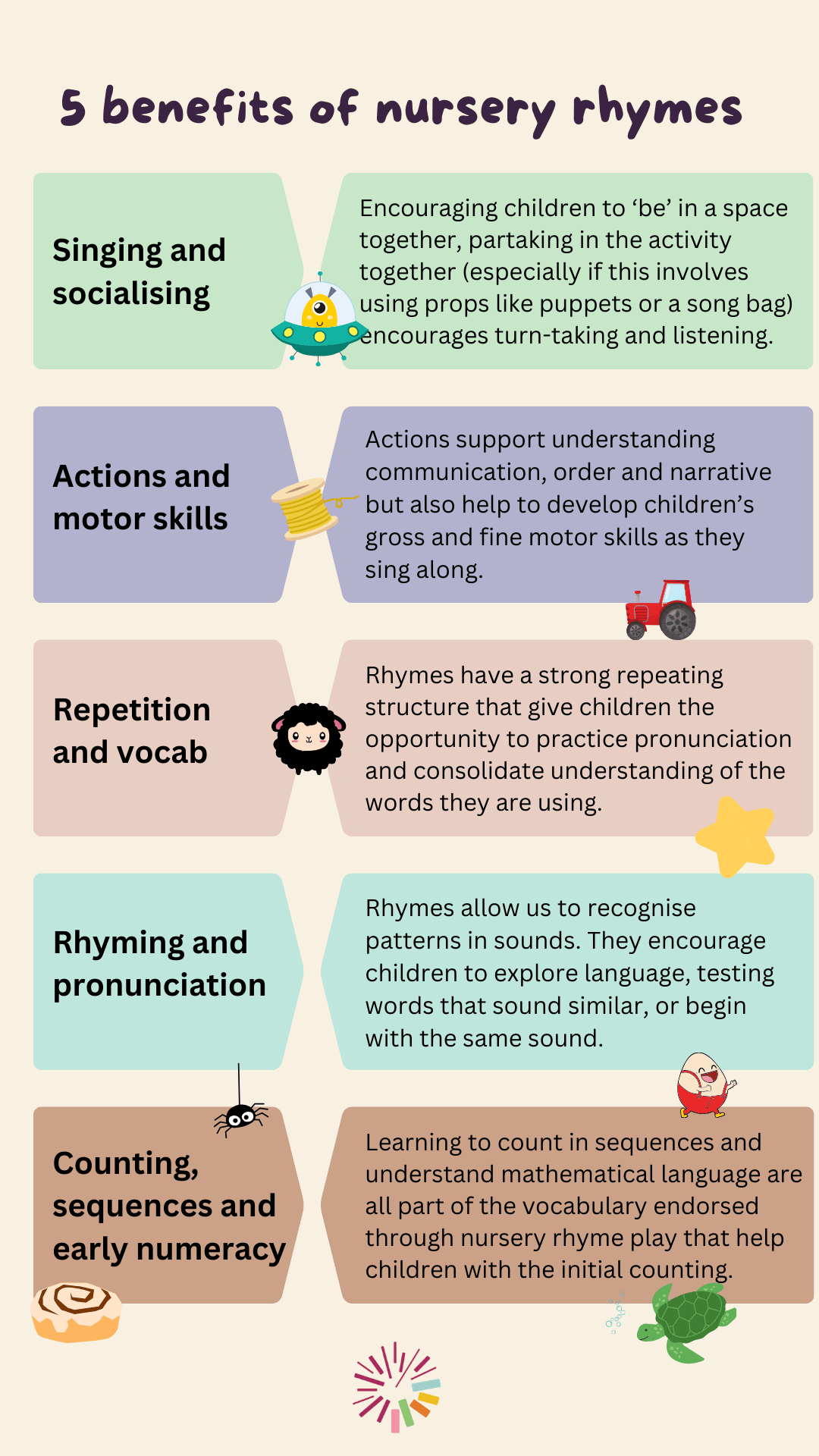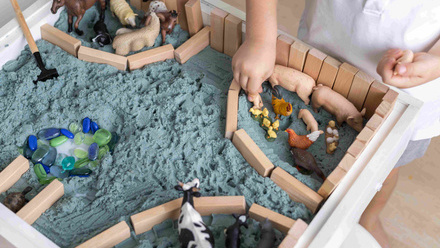5 benefits of nursery rhymes
Nursery rhymes have been a landmark of early education and care for centuries, dating back into the 14th century, though making their way into the canon of emerging children’s literature in the 18th century. Nursery rhymes are just as popular today and are widely shared in early education and care settings with babies and preschoolers adding a fun element of musicality to play. Whether during a circle time activity or to soothe a distressed infant, their timeless lyrics still hold their relevance and wonder today.
Many of the nursery rhymes we share in our settings often have a deep historical note to them, embedding them in our culture and understanding of the past. There are great benefits to these charming rhymes that mean they are used as popular and accessible resources for interaction and learning.

Actions and motor skills
Many nursery rhymes have an accompanying set of actions that truly bring the scene to life! Not only do these actions help children to engage with the order and narrative of a rhyme, they also support young children’s physical development, using a range of gross and fine motor skills as they sing along. Rowing a boat down a stream can build strong core muscles as children lean back and pull themselves up again, whilst signing a spider climbing up a slippery waterspout develops key skills of hand-eye coordination with fine actions.
Repetition and vocabulary
It is common for nursery rhymes to repeat key words or stanzas that enforce the development of a narrative, particularly where numbers are involved. Rhymes such as ‘5 Little Ducks’ have a strong repeating structure that give children the opportunity to practice pronunciation and consolidate understanding of the words they are using.
Rhyming and pronunciation
Rhyming language in nursery rhymes is helpful for engaging children in memorable language, recognising patterns in how words are pronounced to support developing language acquisition. It encourages children to explore language, testing words that sound similar or words that begin with the same sound. This also allows them to distinguish when words sound distinct and create a better overall conceptualisation of the language evolving around them.
Counting, sequences and early numeracy
Counting is a huge aspect of many nursery rhymes! Learning to count in sequence, recognising different patterns and groups of numbers and understanding mathematical language, are all part of the vocabulary endorsed through nursery rhyme play. The memorable nature of rhymes helps children to engage in pattern and makes it easier to learn their initial counting.
Singing together and socialisation
The act of sitting together and interacting through music is a powerful one that has a variety of benefits, not only on our learning but also our wellbeing and social emotional understanding too. Encouraging children to ‘be’ in a space together, partaking in the activity together (especially if this involves using props like puppets, sensory materials or a song bag) encourages turn-taking, sharing and listening skills.
How can you incorporate nursery rhymes into your practice?
We all love a nursery rhyme, and they often take us back to our own special early childhood memories. Whether it’s by audio, video or singing ourselves, think about ways in which you can use nursery rhymes to deepen knowledge and understanding, or promote social and emotional wellbeing.






